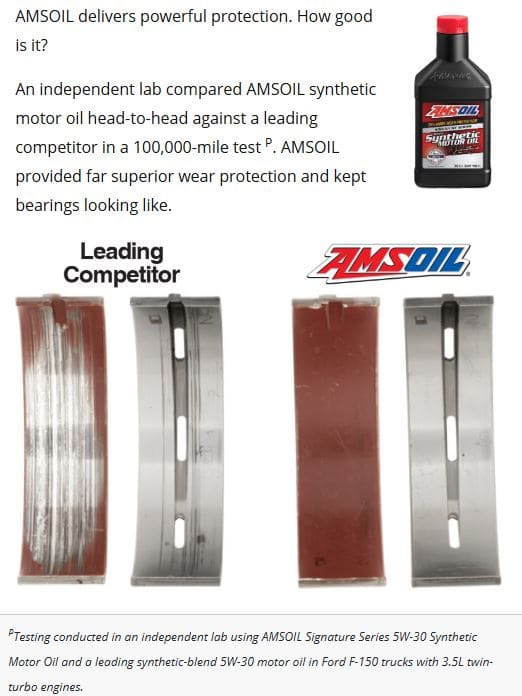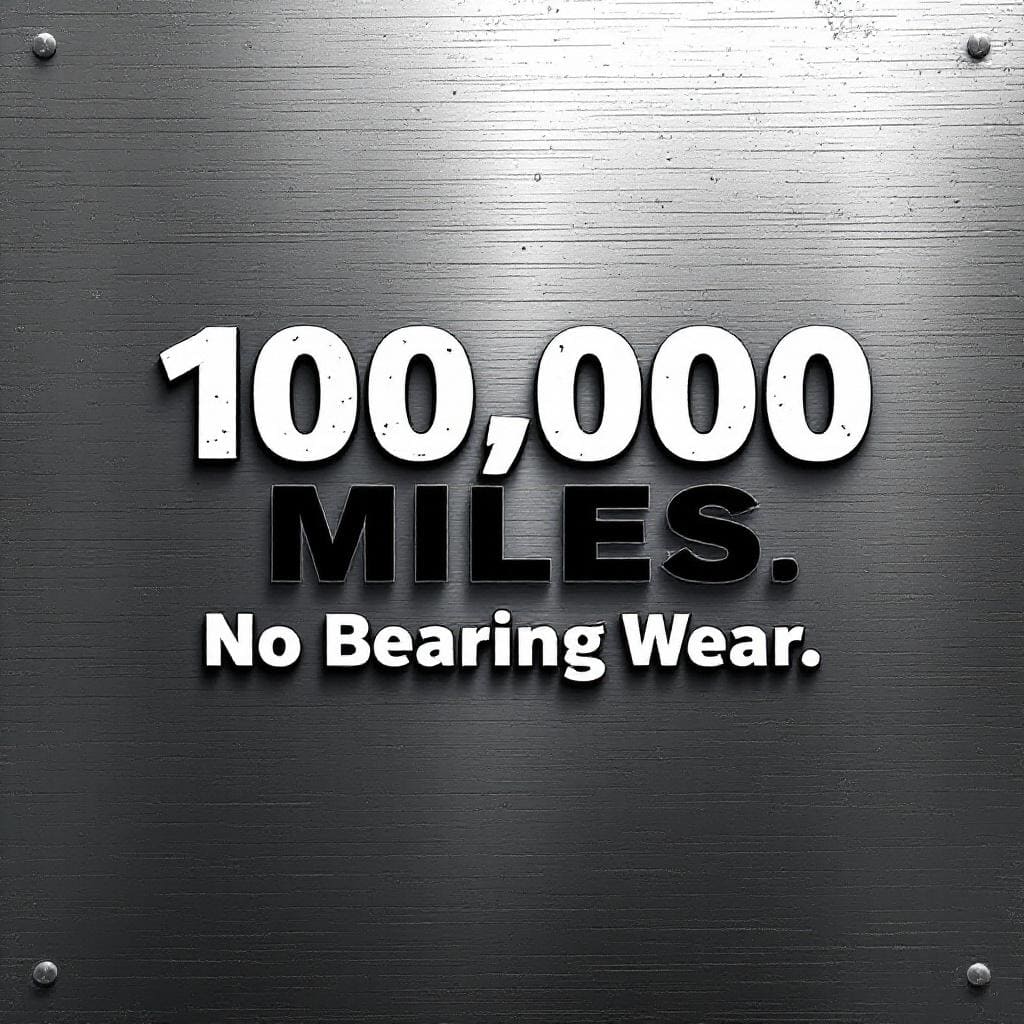Inside a teardown that shows why base oil quality matters over the long haul.
In a Hurry? Here’s the Bearing Story in 60 Seconds
- Independent lab ran a 100,000-mile side-by-side in Ford F-150 trucks (3.5L twin-turbo).
- Compared AMSOIL Signature Series 5W-30 100% Synthetic Motor Oil vs. a leading synthetic-blend.
- Bearings in the 100% synthetic stayed like new; the blend showed measurable wear.
- Results point to the long-term role of base oil stability and additive endurance.
Inside the 100,000-Mile Bearing Torture Test
Two matched Ford F-150s. Same 3.5L twin-turbo engines. Same loads. Same duty cycles.
Testing used AMSOIL Signature Series 5W-30 100% Synthetic Motor Oil and a leading synthetic-blend 5W-30 motor oil, run for a full 100,000 miles.
- Manufacturer-specified oil change intervals
- Regular oil analysis for degradation tracking
- Identical operating conditions start to finish
This wasn’t about catching a failure in a few weeks. It was about watching chemistry hold — or break down — over a realistic service life.
Why Bearings Were the Ultimate Litmus Test for Engine Oil
Main and rod bearings don’t lie. They run under:
- High unit loading — localized forces that can crush a weak oil film.
- Mixed-film lubrication — when the oil layer thins and metal contact looms.
- Tight tolerances — where a trace of varnish or debris can change geometry.
Over enough miles, their surface tells the truth about how an oil handles heat, load, and contamination.
When the Bearings Came Out, the Truth Was Obvious
At teardown, the bearings from the 100% synthetic-lubricated engines showed minimal to no visible wear, maintaining their original surface finish. Bearings from the competitor’s synthetic-blend oil displayed:
- Surface polishing and overlay removal
- Beginning stages of copper exposure
- Minor scoring consistent with high-load fatigue
Analogy – Paint Primer Protection:
Think of engine oil like primer under a coat of paint. You never see it, but it seals and protects the metal beneath. Skip it, and corrosion eats away quietly until the surface fails. High-quality oil keeps that invisible layer intact, just like primer keeps the paint job looking good for years.

The Wear Report
- Base oil integrity: Higher-purity synthetics resist oxidation and viscosity loss.
- Additive stamina: Premium anti-wear packages protect deep into the oil’s life.
- Cleanliness factor: Fewer deposits mean fewer starting points for corrosion and fatigue.
When Microns Mean Money
In fleets or performance builds, bearing wear isn’t just about replacing parts — it’s downtime, labor, and reliability. Oils that hold their film and chemistry under extended stress reduce rebuild frequency and keep performance consistent.
Dig Deeper: The Science of Bearings
Engine bearings let crankshafts spin with almost no friction. Pressurized oil creates a thin layer so metal never rubs on metal. Performance bearings use three layers — steel, copper-lead, and Babbitt — for strength and longer life. Cheaper bearings use aluminum and wear out faster.
Most bearing problems come from poor fit, dirt, or wrong installation, not the bearing itself. Always check bore size and measure clearance at the top since seams are thinner. Some cranks need thrust bearings to stop side movement. Match bearing tangs to notches and keep everything clean when you install. High-power engines should use tri-metal bearings, while budget builds might use aluminum-backed ones. Look for shiny spots on old bearings since these signal bigger issues. Never remove a manufacturer’s rust coating.
🔗 Read the full Hot Rod article with diagrams and installation visuals.
FAQs
Q1: Does this prove all 100% synthetic motor oils outperform blends?
No — formulation quality matters. Some blends outperform low-grade synthetics. This test compared a high-tier synthetic to a mid-tier blend.
Q2: Why test to 100,000 miles?
Extended mileage shows additive depletion, contamination buildup, and oxidation — all wear triggers missed in short bench tests.
